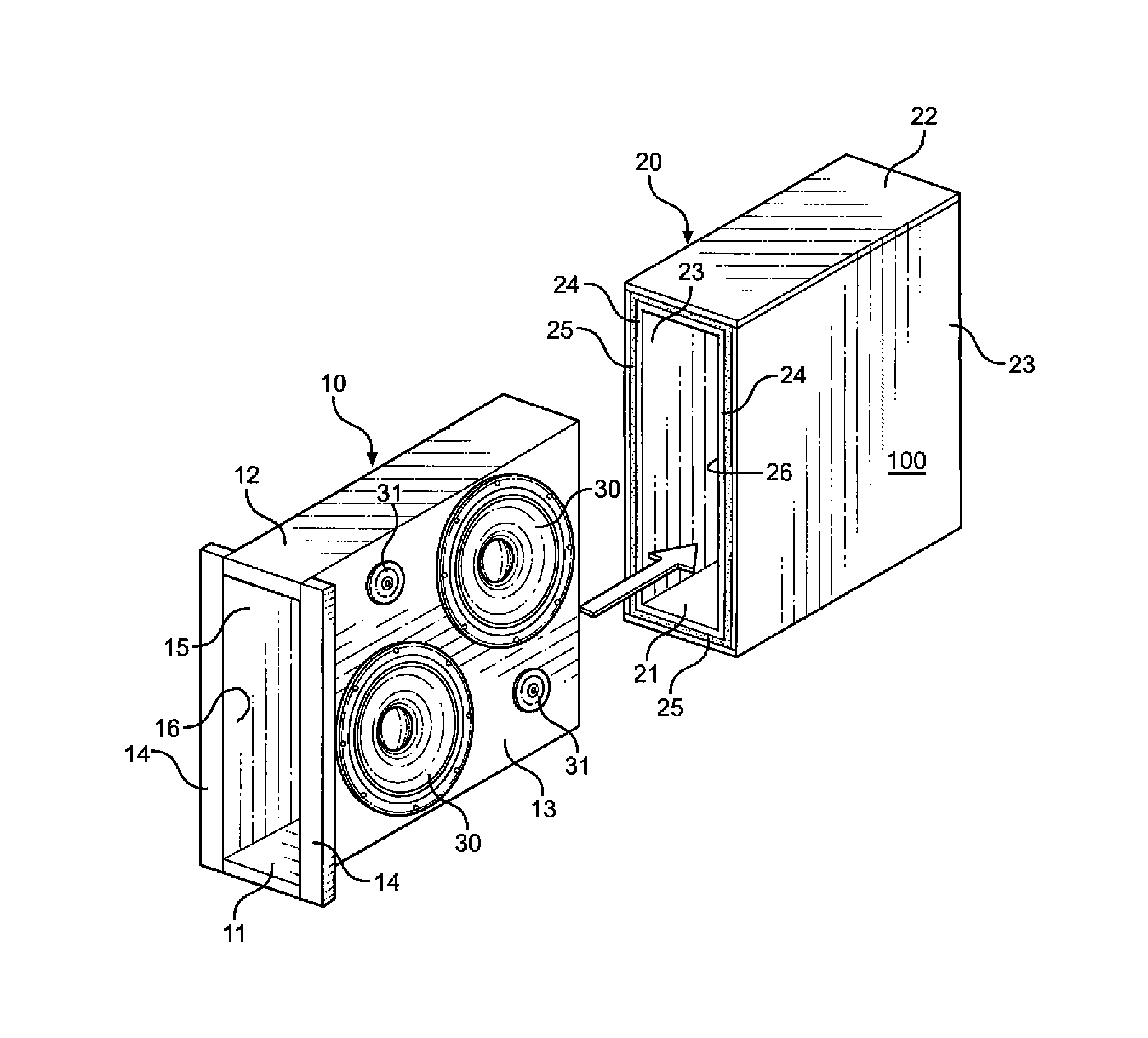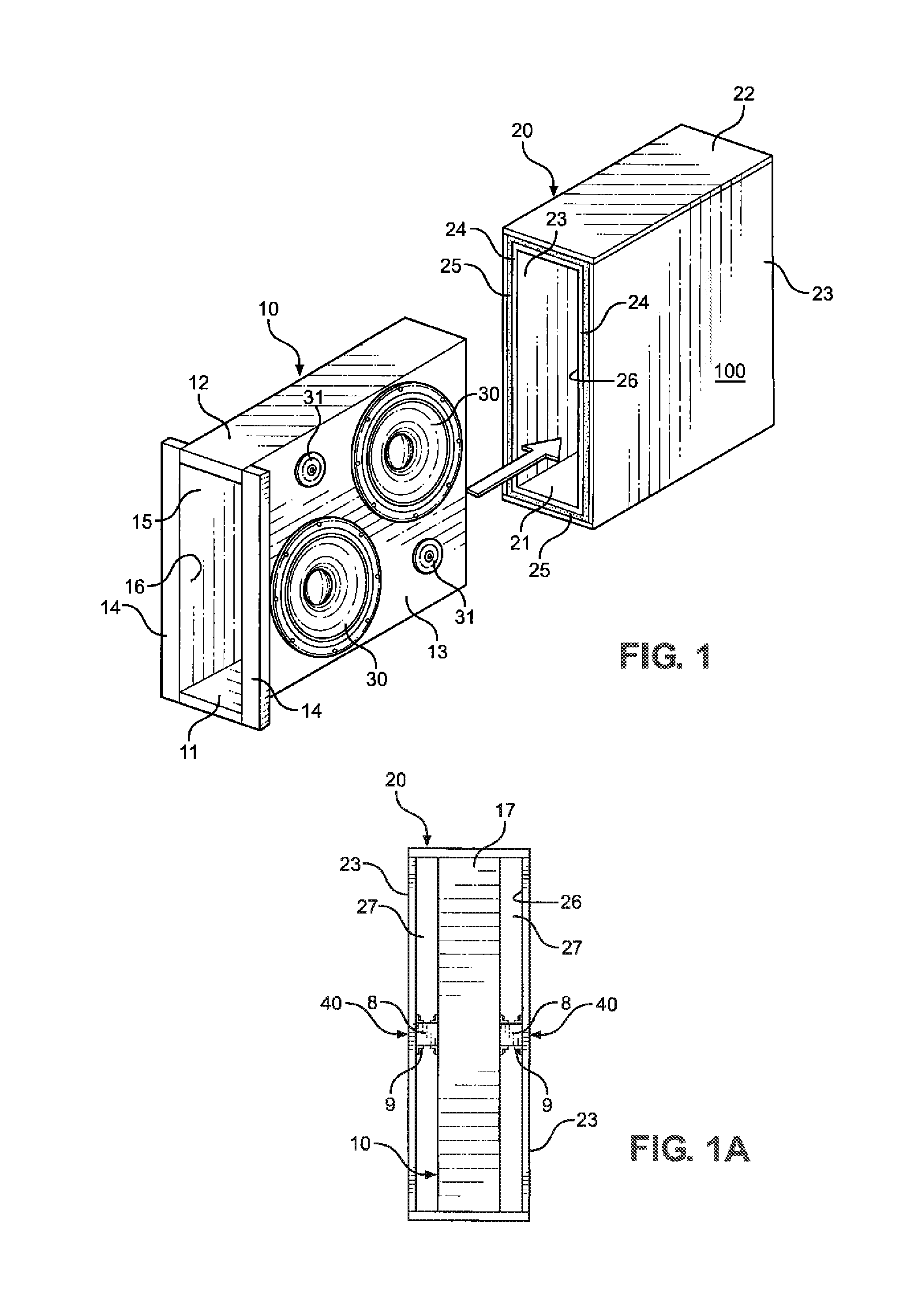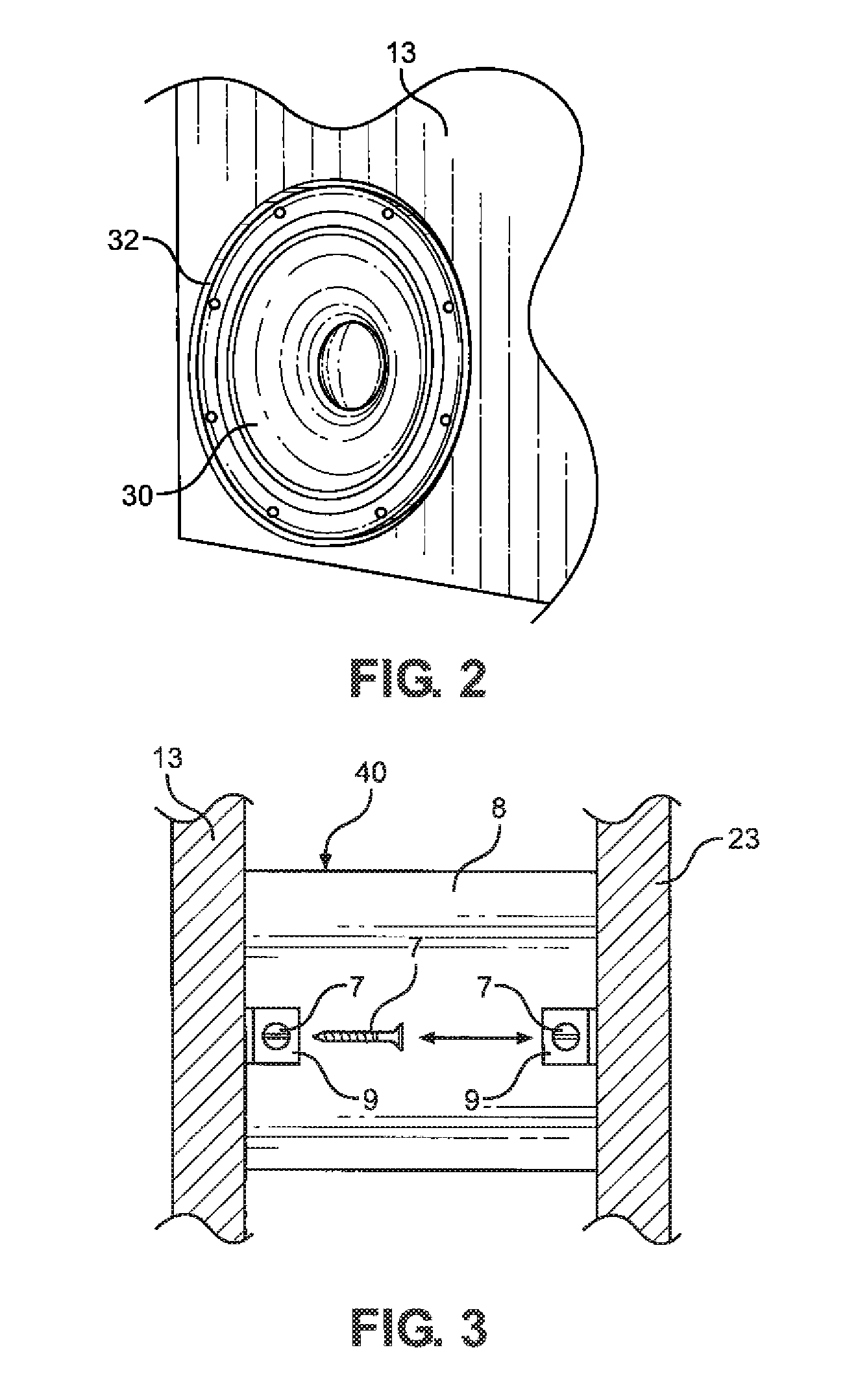Speaker Assembly
a speaker and assembly technology, applied in the field of speaker assemblies, can solve the problems of limited or otherwise curtailed reproduction of sound, unwanted propagation of low-frequency sounds, and inability to enjoy the full capabilities of a sound reproduction system, so as to increase the dynamic range of the speaker system, increase the acoustic loading, and increase the acoustic efficiency of the speaker system.
- Summary
- Abstract
- Description
- Claims
- Application Information
AI Technical Summary
Benefits of technology
Problems solved by technology
Method used
Image
Examples
Embodiment Construction
[0036]Referring to the drawings, FIG. 1 depicts a perspective view of a speaker assembly 100 of the present invention generally comprising internal or inner frame member 10 defining a cabinet structure that is removed from external shell or housing member 20. Speaker assembly 100 of the present invention can be manufactured in a variety of different dimensions; in a preferred embodiment, said speaker assembly 100 has dimensions of approximately 22 inches in height, 22 inches in depth, and 9 inches in width, and can be constructed from approximately ½ inch medium density fiberboard, or any other material exhibiting desired characteristics.
[0037]As depicted in FIG. 1, external shell member 20 and internal frame member 10 can be manufactured from a solid structural material, such as, for example, wood or a simulated wood product, medium density fiberboard (“MDF”) or particle board, plastic, composite, or metal material, or any other substantially solid material exhibiting desired chara...
PUM
 Login to View More
Login to View More Abstract
Description
Claims
Application Information
 Login to View More
Login to View More - R&D
- Intellectual Property
- Life Sciences
- Materials
- Tech Scout
- Unparalleled Data Quality
- Higher Quality Content
- 60% Fewer Hallucinations
Browse by: Latest US Patents, China's latest patents, Technical Efficacy Thesaurus, Application Domain, Technology Topic, Popular Technical Reports.
© 2025 PatSnap. All rights reserved.Legal|Privacy policy|Modern Slavery Act Transparency Statement|Sitemap|About US| Contact US: help@patsnap.com



